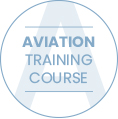Aviation auditor (RTC01a)

Context
As required under AMC1 ORO.GEN.200(a)(6), AMC1 CAMO.A.200(a)(6), and AMC1 145.A.200(a)(6), the independence of the compliance monitoring function should be established by ensuring that audits and inspections are carried out by personnel not responsible for the function, procedure or products being audited. According to AMC1 ORO.GEN.200(a)(6) and GM1 ORO.GEN.200(a)(6), the personnel conducting audits and inspections must be able to demonstrate relevant knowledge, background and appropriate experience related to the activities of the operator, including knowledge and experience in compliance monitoring. In addition, those responsible for managing the compliance monitoring function should receive training on this task, covering the requirements of compliance monitoring, manuals and procedures related to the task, audit techniques, reporting, and recording.
This training provides a familiarisation with the European Aviation Safety Regulations – as applicable to the aeronautical service being audited – and covers the complete audit cycle from initial planning to final closure and discusses how to implement practical, value-adding solutions in response to audit findings. Competent auditors having high credibility within their organisations ensure that relevant standards are followed, and processes are continuously improved. The global approach to auditing proposed in this training ensures further identification and eradication of costly and non-value-adding activities.
Training items
Structure, content, environment & development of EASA regulations (days 1 and 2)
- Introduction to Regulation (EU) No. 1321/2014 / 965/2012 (as applicable).
- Regulatory environment of EASA Part-145 / Part-M/CAMO / AIR OPS (as applicable).
- Development of EASA regulations: rulemaking.
- Structure & main contents of EASA Part-145 / Part-M/CAMO / AIR OPS (technical requirements – as applicable – including manuals and procedures).
Auditing techniques (days 3, 4, and 5)
- Compliance monitoring systems techniques and principles.
- Traditional and ‘system’ auditing philosophies.
- Risks and defences – the link to the compliance monitoring system.
- Audit planning.
- Opening and closing meetings and interview techniques.
- Gathering evidence, product/service sampling techniques and limitations.
- Root cause analysis and accident causation.
- Audit reporting, tracking and closure.
- The ISO and the regulatory audits, differences, and similarities.
- Audit classification.
- Classification of findings.
- Auditor independence.
- Documentation analysis.
- The ISO 19011 (auditing management systems) standard.
- Auditing techniques and the human factor.
Training objectives
- Enhanced competence to audit against applicable regulations for compliance and identification of deficiencies.
- Achievement of consistency and thoroughness of approach across all areas of responsibility.
- Identifying under-performing processes and driving system improvements to positively affect safety performance.
Administration
- Duration: 5 days.
- Deliverables: All participants will receive a certificate of attendance.
Perspective participants
- Current and perspective auditors.
Prerequisites
- No specific prior knowledge is required to attend this course.
WE WILL REPLY AS SOON AS POSSIBLE
"*" indica i campi obbligatori